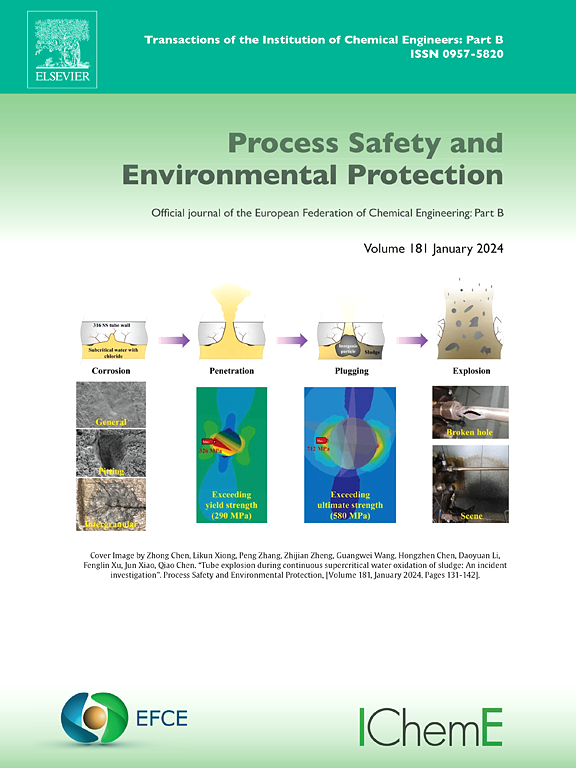Effect of oxygen deficient conditions on oxidative spontaneous combustion characteristics of raw coal and water-immersed air-dried bituminous coal
IF 6.9
2区 环境科学与生态学
Q1 ENGINEERING, CHEMICAL
引用次数: 0
Abstract
The effects of low-oxygen conditions on the oxidation and spontaneous combustion characteristics of raw coal and water-immersed air-dried bituminous coal was studied. Via analysis, including Fourier Transform InfraRed (FTIR), ThermoGravimetry (TG) and Differential Scanning Calorimetry (DSC), the chemical groups and elemental composition of the coal samples were studied, as well as the impact of oxygen concentration on changes in weight and heat release of the coal samples. The water immersed coal sample ignites at a lower temperature compared to the raw sample. The water immersed coal sample undergoes spontaneous combustion at a relatively fast rate, requiring a lower temperature for complete reaction, but it releases less heat after combustion compared to the raw coal sample. In an oxygen-deficient environment, the overall exothermic oxidation process of coal exhibits a lag, with the lag effect becoming more pronounced as the oxygen deficiency intensifies, especially noticeable in high-temperature stages. The impact of water immersion and air drying on the spontaneous combustion of coal is lower compared to the influence of oxygen concentration on coal.
求助全文
约1分钟内获得全文
求助全文
来源期刊

Process Safety and Environmental Protection
环境科学-工程:化工
CiteScore
11.40
自引率
15.40%
发文量
929
审稿时长
8.0 months
期刊介绍:
The Process Safety and Environmental Protection (PSEP) journal is a leading international publication that focuses on the publication of high-quality, original research papers in the field of engineering, specifically those related to the safety of industrial processes and environmental protection. The journal encourages submissions that present new developments in safety and environmental aspects, particularly those that show how research findings can be applied in process engineering design and practice.
PSEP is particularly interested in research that brings fresh perspectives to established engineering principles, identifies unsolved problems, or suggests directions for future research. The journal also values contributions that push the boundaries of traditional engineering and welcomes multidisciplinary papers.
PSEP's articles are abstracted and indexed by a range of databases and services, which helps to ensure that the journal's research is accessible and recognized in the academic and professional communities. These databases include ANTE, Chemical Abstracts, Chemical Hazards in Industry, Current Contents, Elsevier Engineering Information database, Pascal Francis, Web of Science, Scopus, Engineering Information Database EnCompass LIT (Elsevier), and INSPEC. This wide coverage facilitates the dissemination of the journal's content to a global audience interested in process safety and environmental engineering.
 求助内容:
求助内容: 应助结果提醒方式:
应助结果提醒方式:


